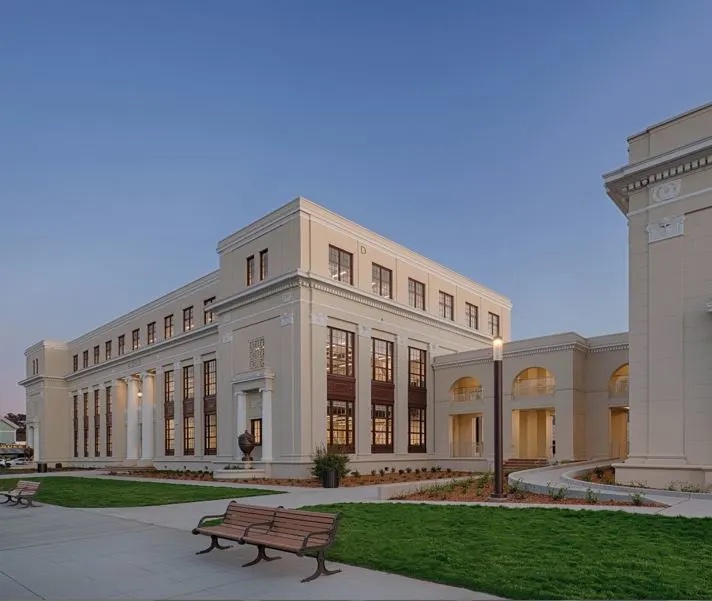In a precedent-setting case, a California appeals court last week upheld the ability of a school district to base a parcel tax on a building’s area with a ceiling on how much a property owner would have to pay.
The unanimous decision by three judges on the 1st District Court of Appeal in San Francisco follows 15 years of litigation over various iterations of Alameda Unified’s effort to design a parcel tax tied to a property’s square footage instead of a flat amount. The decision gives school districts and community colleges more latitude to design a parcel tax, which is one of the few ways that they can annually supplement state funding for education. Instead of being restricted to charging a parcel tax by a uniform amount per property, regardless of whether the property includes a $200,000 cottage or a $10 million mansion, districts will have the option to charge by square footage with a cap on the amount.
“The decision provides districts with flexibility and clarity,” said William Tunick, the attorney representing the school district. There had not been a previous decision on a school parcel tax based on square footage at the appellate court level.
As a published appellate decision, its conclusion would be binding across the state on any Superior Court that considered a similar challenge to another tax.
In Leland Traiman v. Alameda Unified, the court overturned an April 2022 decision by Alameda County Superior Court Judge Julia Spain, who ruled that Measure A violated a state law that requires parcel taxes be set at a uniform rate. Measure A assesses a tax of 26.5 cents per square foot of building on a property, with a maximum assessment of $7,999 per parcel.
The plaintiff argued — and Spain had agreed — that the cap means the district has, in effect, created two classifications of properties that are taxed differently – one for properties with buildings smaller than 30,190 square feet that paid under $7,999 and one with a larger square footage that still paid the maximum $7,999. Undeveloped land parcels are charged $299.
But the appeals court ruled Measure A satisfied the legal requirement that a parcel tax should be applied uniformly for all classes of taxpayers, with no distinction between residential and commercial properties or between homes and apartments – even if it results in a different tax bill due to the size of the property.
The court pointed to a 2019 decision by the state 2nd District Court of Appeal, based in Los Angeles, that found that the Los Angeles County park district could charge a parcel tax based on the square footage of developed land even though it yielded a different tax bill depending on the size of the property — a ruling that the justices in the latest decision said applied to school districts and community colleges. And nothing in statutory language, case law, legislative history or public policy indicates a school district with a parcel tax based on square footage cannot set a maximum amount per parcel, the 1st District judges said.
“This is excellent news to receive just 11 days before we open our schools for a new year,” said Pasquale Scuderi, superintendent of the Alameda Unified School District, which has about 9,000 students.
With 67% of voters in favor, Measure A barely exceeded the minimum two-thirds majority required for passage of a school board-initiated initiative. Measure A, which has been in effect while appealed, was designed to raise about $10 million per year to bolster teachers’ pay with the goal of retaining staff in the district.
An attorney for the taxpayer who filed the suit told the San Francisco Chronicle that opponents of Measure A were considering their options, including an appeal to the state Supreme Court.
Parcel taxes are one of the few sources that school districts can use to supplement their general operating budgets. About 1 in 10 school districts have adopted them, mainly in wealthy districts around Los Angeles and the Bay Area.
Parcel taxes are an outgrowth of Proposition 13, the landmark 1978 anti-tax initiative that outlawed additional property taxes based on the assessed value of a property. Proposition 13 immediately resulted in a significant drop in property taxes paid by taxpayers and collected by local governments, including school districts. A decade later, the Legislature clarified that school districts could pass a special tax, by a two-thirds vote majority, as long as it was at a uniform rate for all taxpayers. The Legislature gave local governments the authority to exempt senior citizens from paying them.
A parcel tax is regressive since it doesn’t consider the ability of a property owner to pay it. A parcel tax based on the size of a home or building square footage is potentially a fairer measure of an owner’s wealth, and a cap on a parcel tax could make it more palatable to owners of warehouses and Amazon-size distribution centers, while potentially reducing the political opposition from owners of apartment complexes and office buildings.
In December 2022, the San Francisco-based 1st District Court of Appeal issued another landmark decision, ruling that parcel tax initiatives proposed by voters — not school boards — require only a majority vote to pass, not two-thirds. This could lead to the passage of more parcel taxes organized by teachers or parent groups.
However, the California Business Roundtable, the Howard Jarvis Taxpayers Association, and the Commercial Real Estate Development Association have qualified an initiative for the November 2024 statewide ballot that would overrule that decision and require a two-thirds vote on all new tax measures. Proponents of the California Two-Thirds Legislative Vote and Voter Approval for Fee and Charge Increases Initiative have already raised $16 million to campaign for its passage.
